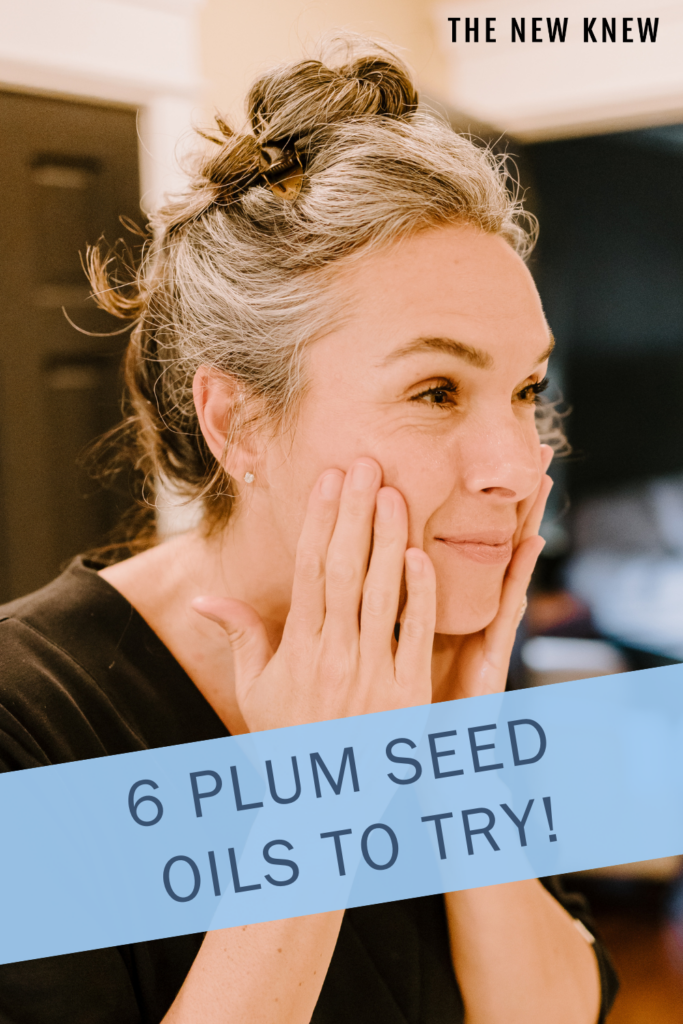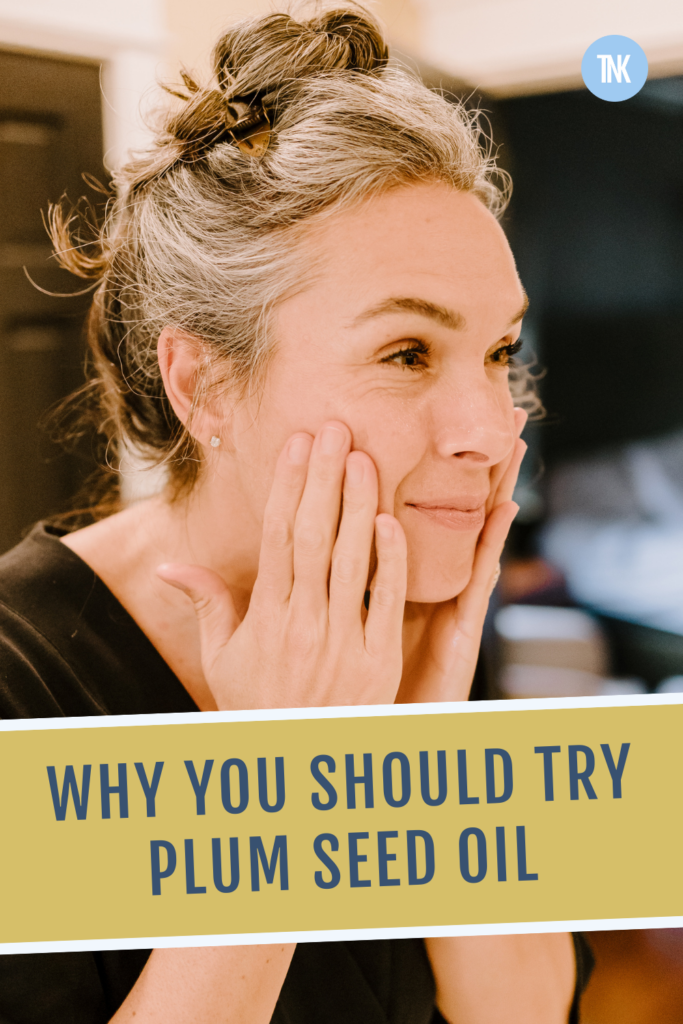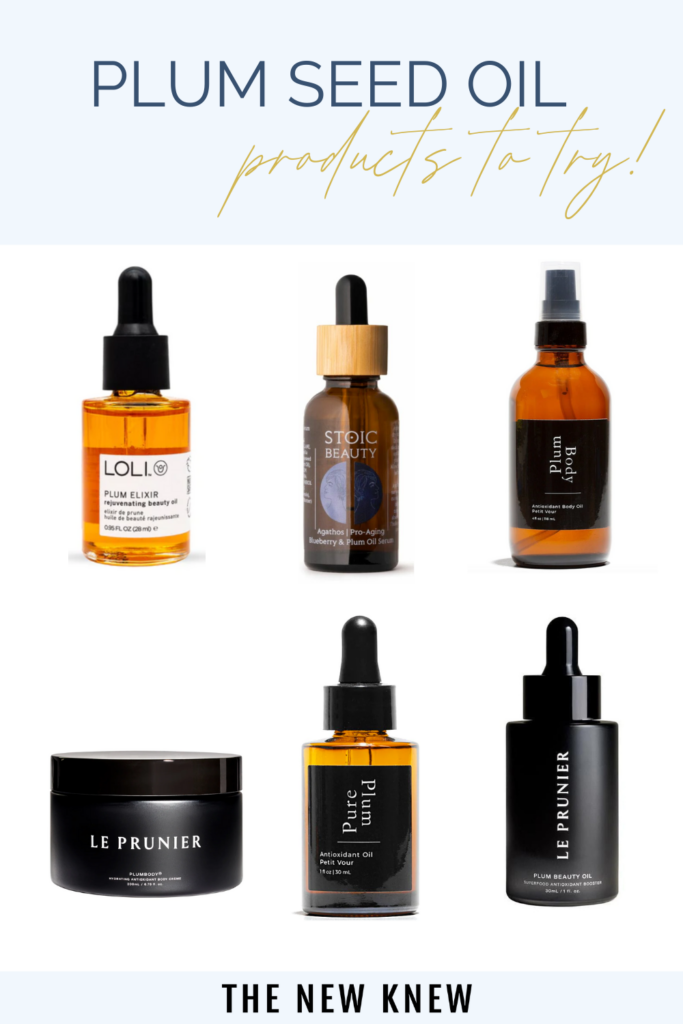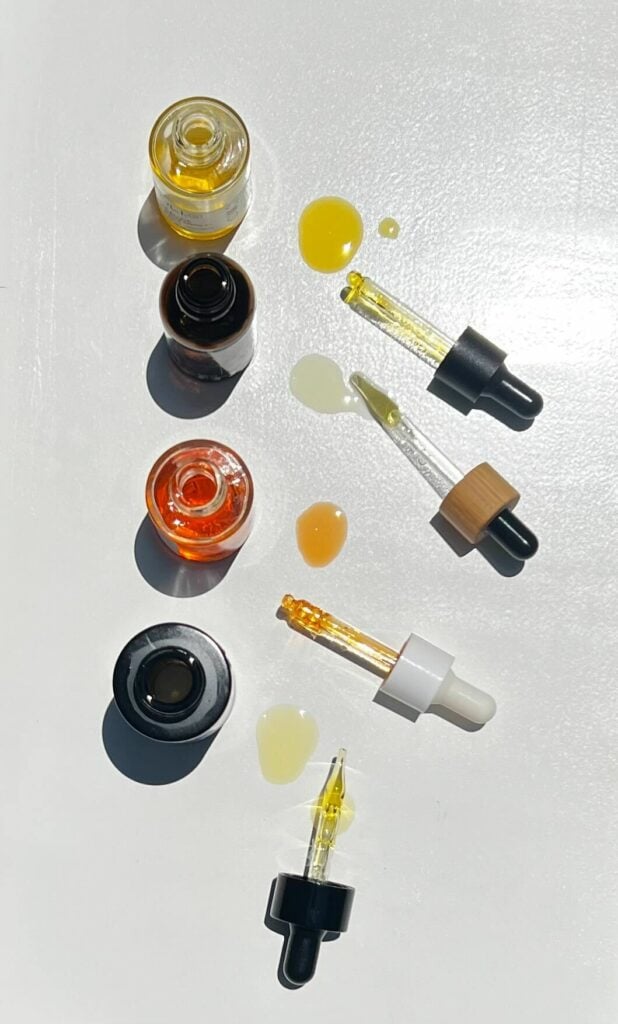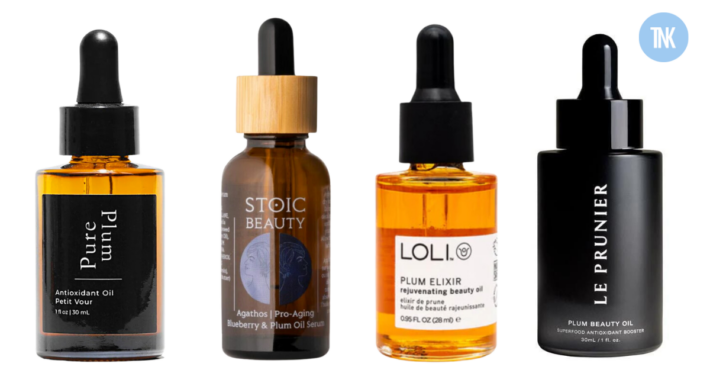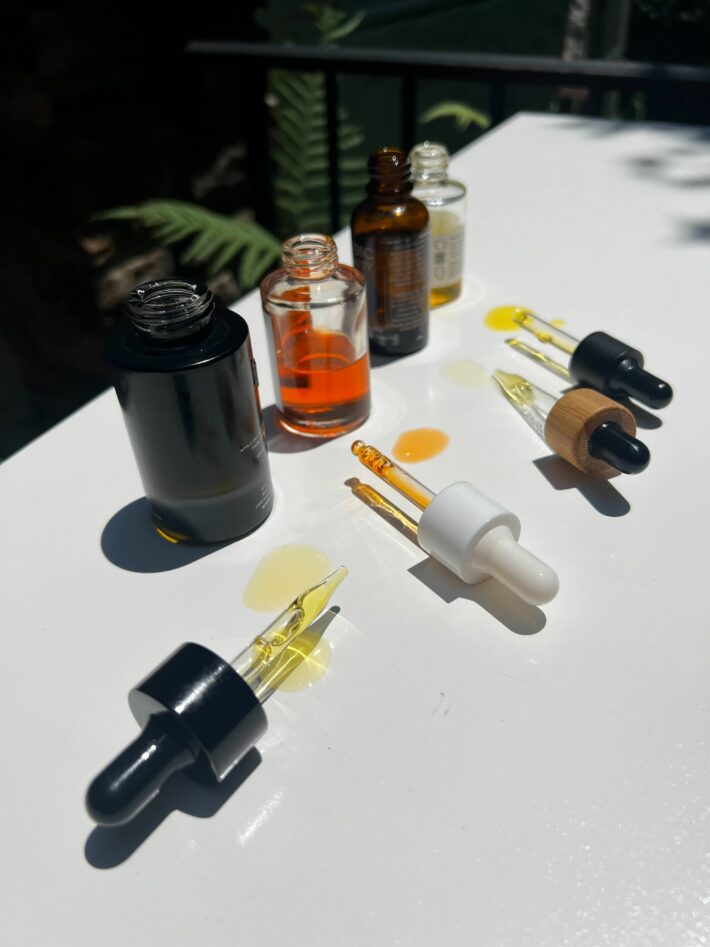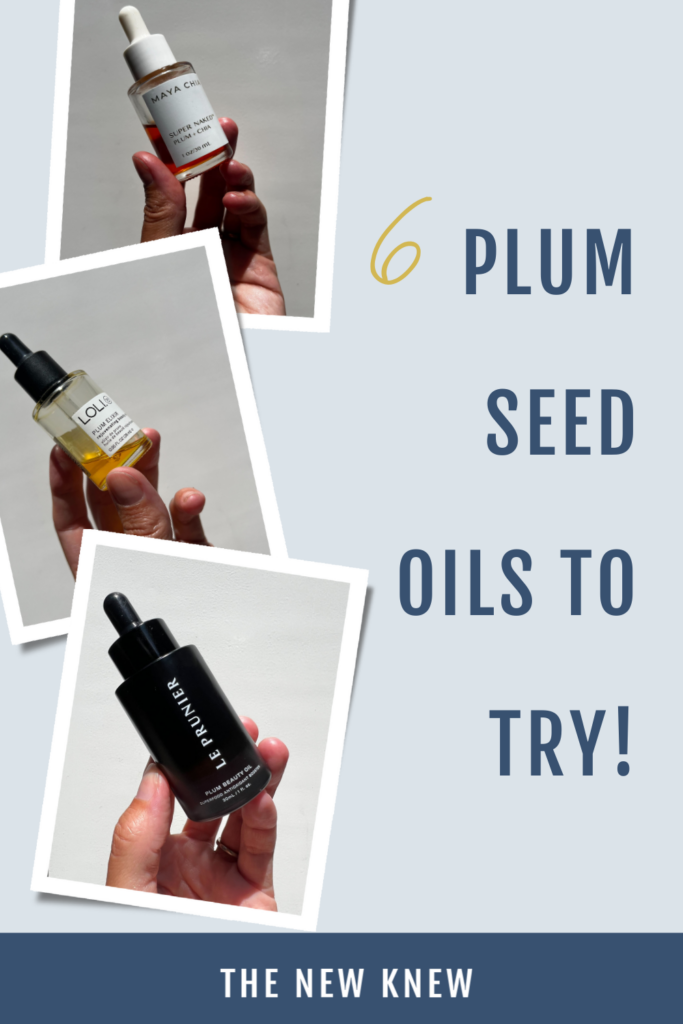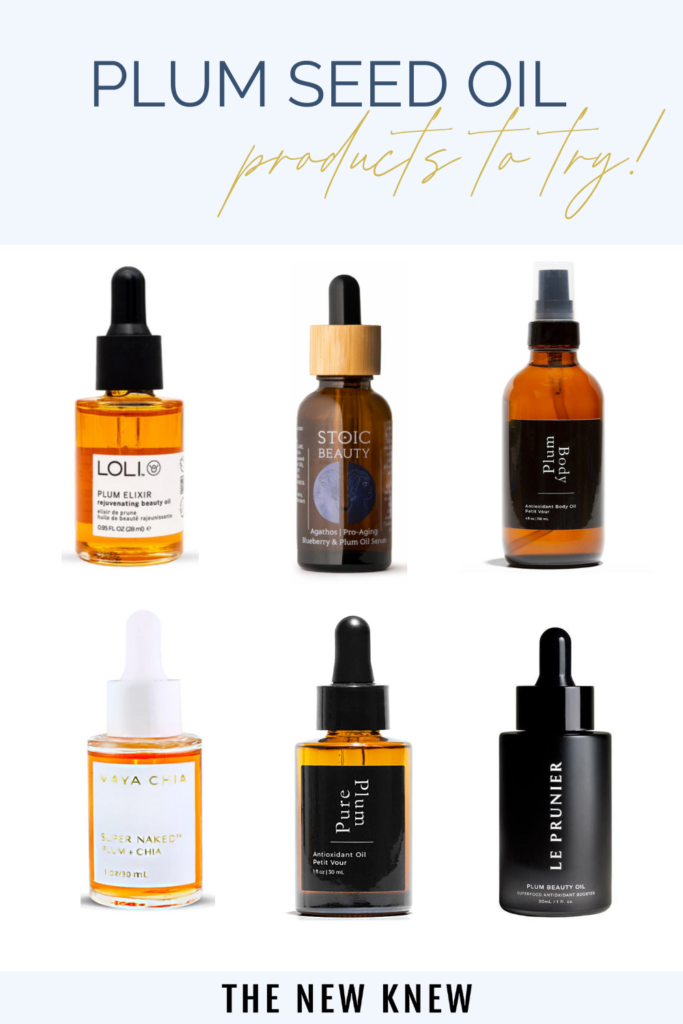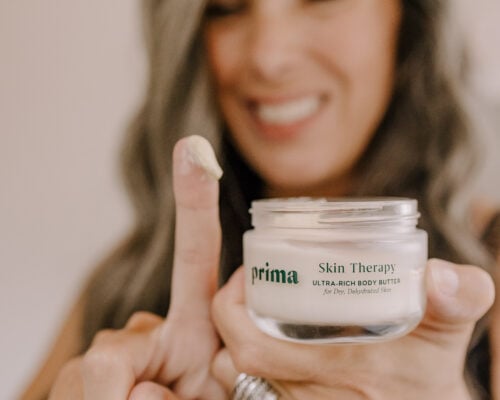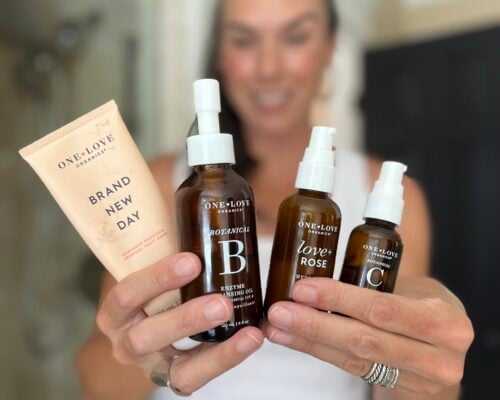Plum seed oil is making waves on the beauty scene these days. But what is it and why is it getting so much play? Today we’re digging into the benefits of plum seed oil (also referred to as plum oil), who should use it and how to incorporate it into your routine. Have you tried plum oil and are already a convert? We’ve got 6 MORE plum oil products for you to try!
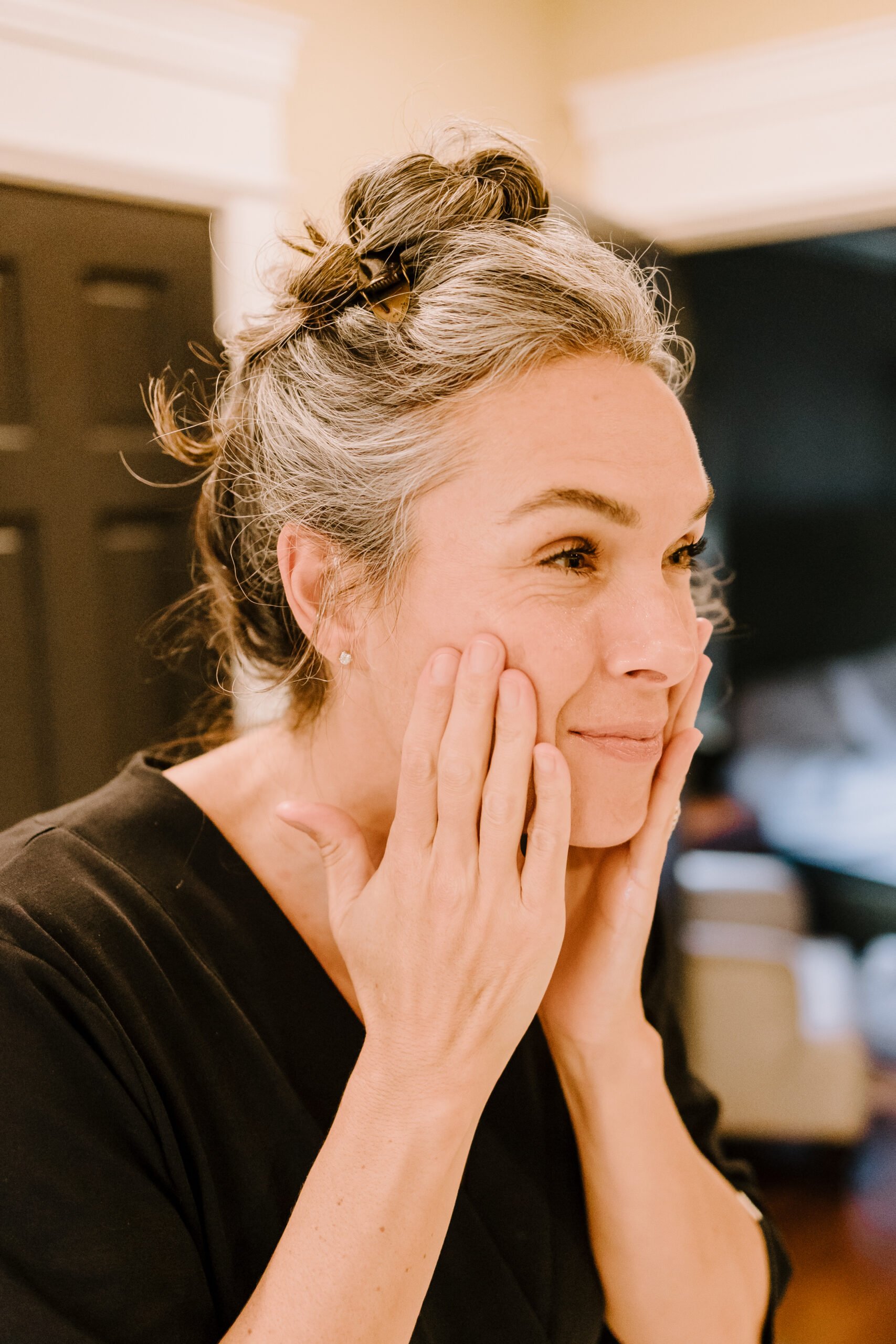
By: Lisa Fennessy
Ever since Le Prunier rocked the beauty world with the debut of their Plum Beauty Oil, I’ve been 100% obsessed with plum seed oil. My two favorite things about it are 👉the scent👈 and how plump it makes my skin feel. We’re seeing more and more brands jumping on this game-changing ingredient and for good reason: IT WORKS…and there is really nothing else like it.
IN THIS POST:
- What I love about plum seed oil
- How to use plum seed oil
- 6 Plum seed oil products to try
- FAQ
- References
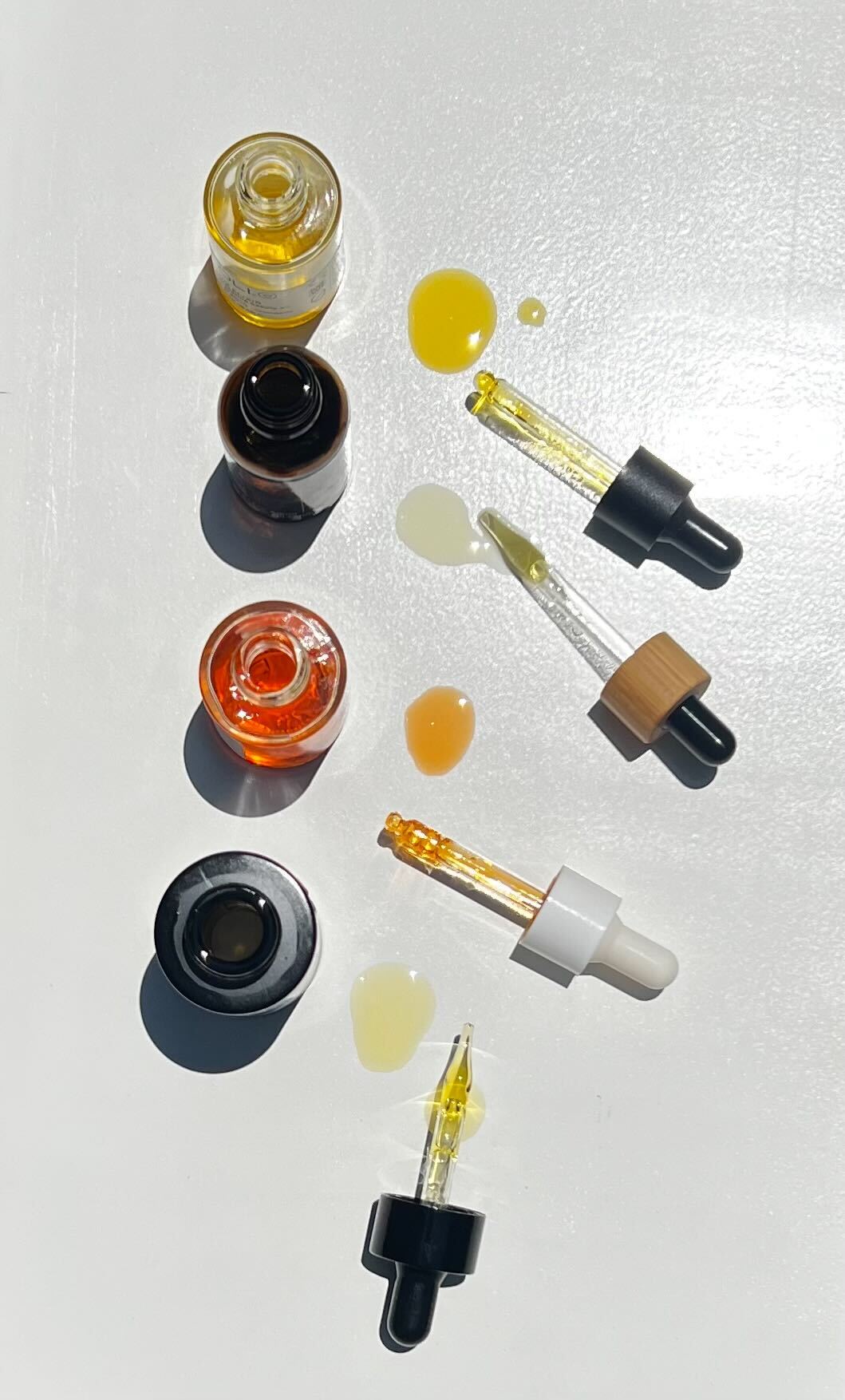
What I love about plum seed oil
Right out of the gate this oil is hardy, plumping, smells amazing, keeps skin moisturized and overall fortifies the skin. It doesn’t take much more than that to fall in love with this oil but to be honest, that’s just scratching the surface.
Here’s a snapshot of what this superhero ingredient can do:
- Protects from free radicals. Plum oil’s antioxidants inhibit free radicals and UV-induced enzymes that break down your skin’s collagen, hyaluronic acid, and elastin (7, 12).
- More powerful than Marula at protecting from free radicals (antioxidant test results for Marula (9).
- Stops the enzymes that break down skin following excessive UV exposure (something retinol also does) (12).
- Evens skin tone. Plum oil’s unique antioxidant and fatty acid profile including B-carotene, Omega 6, and octadecenedioic acid even skin tone affected by UV and postinflammatory hyperpigmentation (18, 21, 19, 20).
- Improves hyperpigmentation. Plum was applied to treat moderate hyperpigmentation and photoaging in 114 patients for 8 weeks — there was significant improvement in clearing hyperpigmentation spots (2).
- Is a natural sunscreen booster as plum’s antioxidants rutin, B-carotene, and vitamin E are photoprotective (10, 5). Plum may have an SPF of 19-22. Sun protection factor (SPF) for plant oils is determined with the in vivo Colipa method of phototesting on people and confirmed with the spectrophotometric method of Mansur. Oils with the B-carotene and vitamin E level of plum oil have an SPF of 19-22 (16).
Plum oil works for most skin types but is especially beneficial for dry, mature, acne-prone, sensitive and redness-prone skin—it can even be used to calm skin conditions like rosacea and eczema (1, 15) which is why I like using it on my son’s face too.
RELATED: Le Prunier Plum Beauty Oil Review
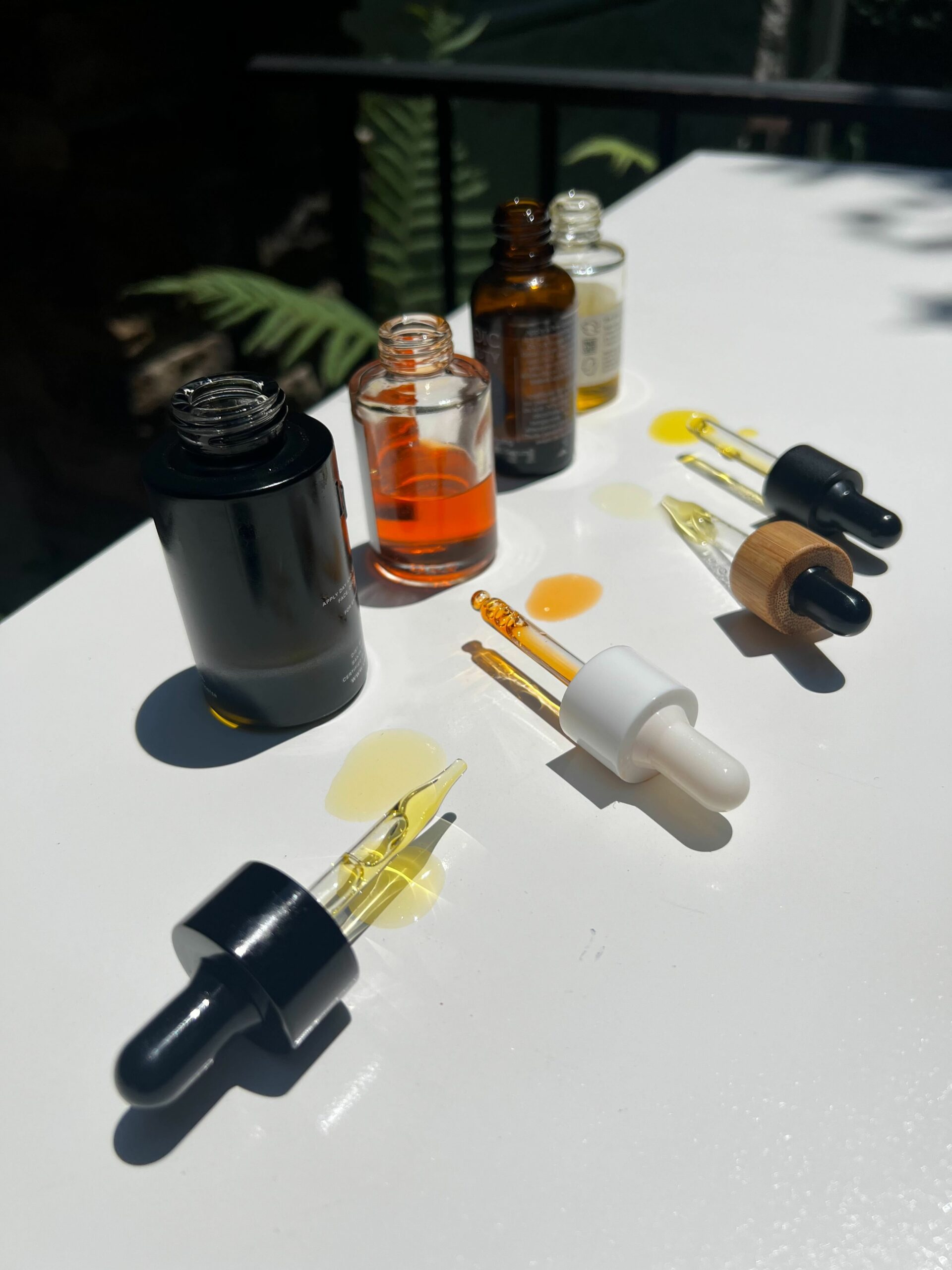
How to use plum seed oil
There are very few oils that we would recommend using both day and night but this one fits the bill. It’s lovely during the day as a protective oil against free radicals and UV. Yet it’s also great at night as a reparative oil to treat hyperpigmentation and UV damage. But the fun doesn’t stop there because plum seed oil can be used for so much more…
- Prepping skin before makeup? Apply a drop or two to skin before your foundation as a primer.
- Want to turn makeup into skincare? Add a drop or two to your foundation.
- Spending time in the sun? Plum oil adds a natural boost of SPF protection.
- Dry or damaged hair? Massage a few drops to the ends of your strands.
- Stressed out? Drink plum seed oil. jkjk.
6 Plum seed oil products to try
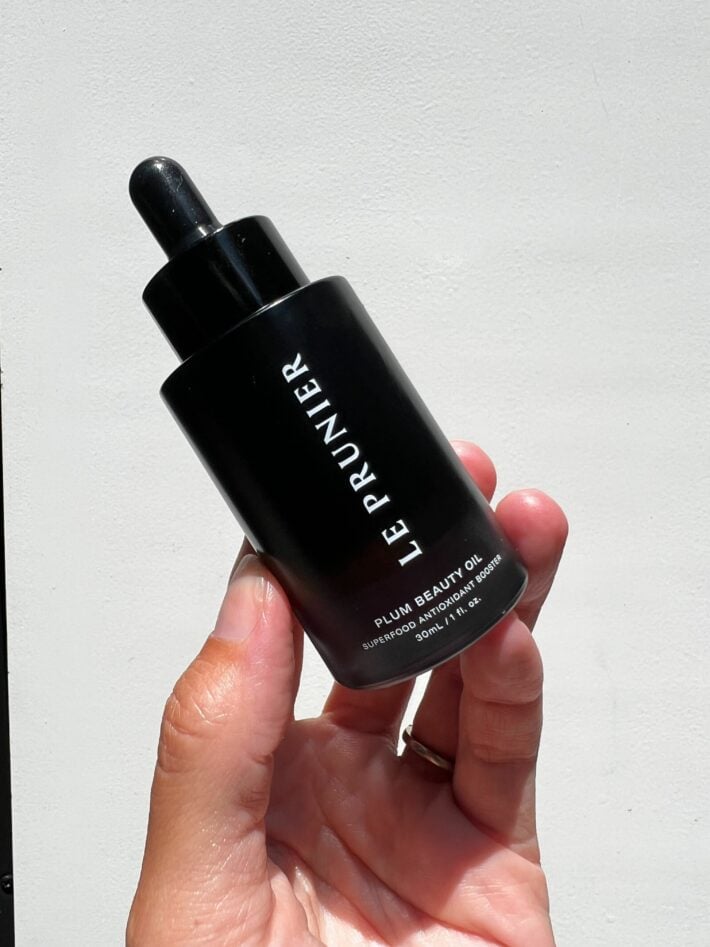
Le Prunier Plum Beauty Oil | $72
The OG plum oil that still has me coming back for more. Le Prunier’s single-ingredient plum oil is lightweight and absorbs easily, but keeps skin plump and deeply moisturized all day long. Did I mention it smells like an almond croissant?! So good.
What’s unique about Le Prunier is they plant, cultivate, harvest and cold press their own plum seed oil on their USDA & CCOF Certified Organic plum farm (you know you’re getting the real deal—get the full scoop here). They have full control over every step of the process making this face oil one of the very few that is truly “seed to bottle” or “seed to face.”
I’m truly obsessed with this face oil and dare I say, if I had to choose a desert island oil, this would be it.
Pros:
- USDA Certified Organic
- Gorgeous scent
- Single ingredient
- Super effective
- Sustainability practices
- PETA certified, vegan and cruelty free
- Clinically tested
- Overall user experience
Cons:
- Price
- Single ingredient (could be a pro based on your needs!)
Save: Use code THENEWKNEW for 15% off at Le Prunier.
RELATED: Girl Talk with Le Prunier Founders
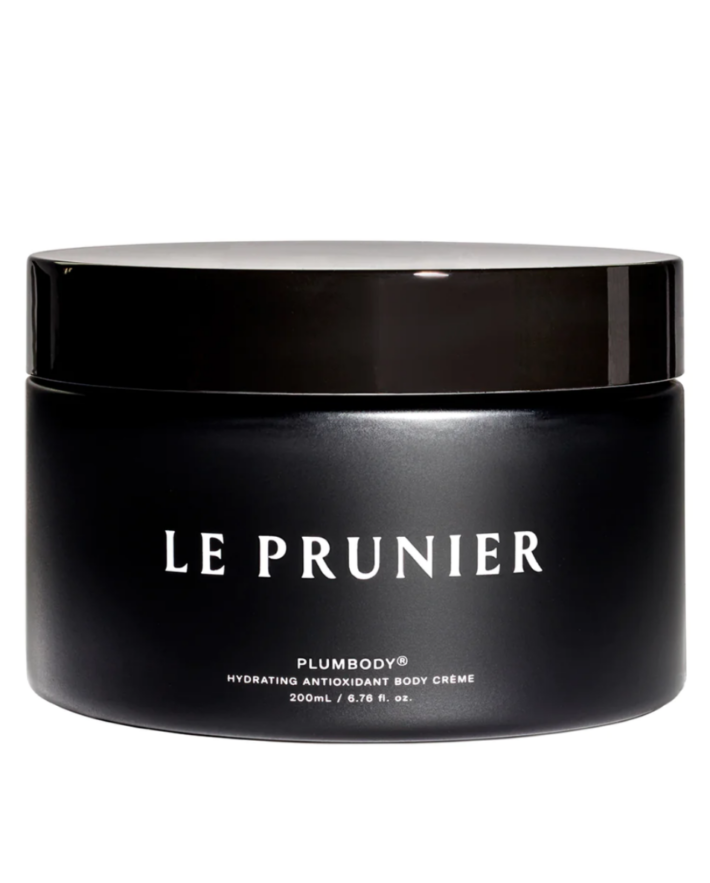
Le Prunier Plumbody | $80
Speaking of Le Prunier…another thing I love about this brand is that they don’t just launch products willy nilly or make random claims about their efficacy. Everything from their line is thoughtfully created, perfected and clinically tested.
Their latest launch is no exception. A super nourishing, velvety, antioxidant body cream that provides all of the incredible plum oil benefits—plus a few more—to the skin below your neck. Because why should your face get all the goods?!
This new cream builds on their signature plum oil and adds a few extra skin-loving ingredients like Midnight Muir® (a patented plum extract exclusive to Le Prunier) and eragrostis tef extract. Le Prunier explains that together they are shown to help decrease redness, dryness and flakiness, fight free radicals, improve skin elasticity, perk up tired skin, help smooth and firm and decrease fine lines along the neck, décolletage, and body. This is WAY more than your average body lotion.
Pros
- Patented ingredients you won’t see elsewhere
- Scent
- Super effective
- Sustainability practices
- PETA certified, vegan and cruelty free
- Clinically tested
Cons:
- Price
- Not USDA Certified Organic
- I wish it had SPF in it too!
Save: Use code THENEWKNEW for 15% off at Le Prunier.
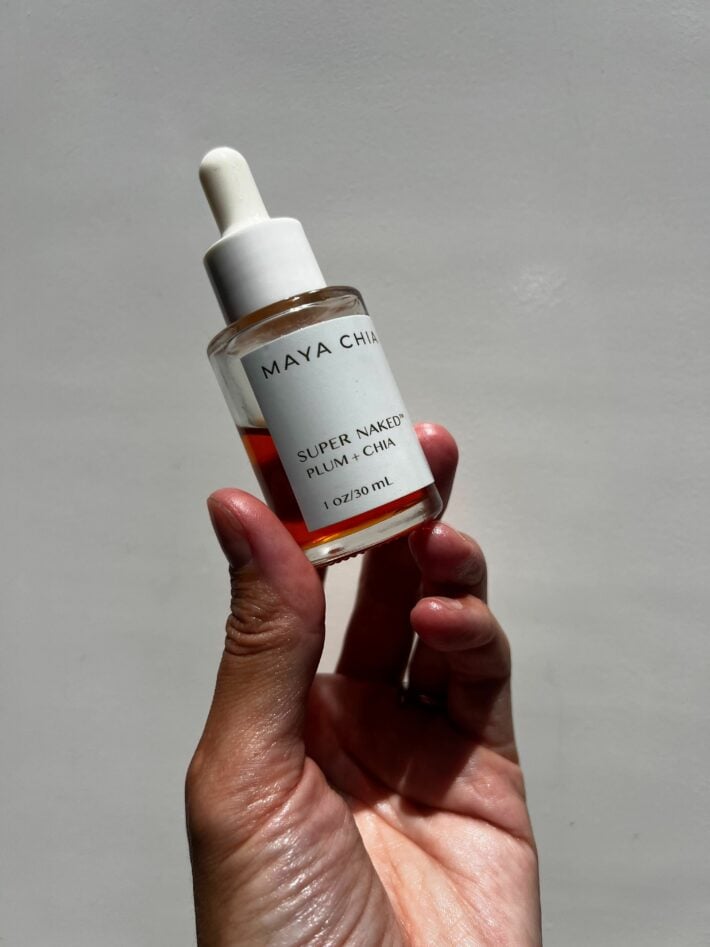
Maya Chia Super Naked Plum + Chia Face Oil | $70
When Maya Chia launched Super Naked I couldn’t get my hands on it fast enough. I mean, a plum-chia-astaxanthin-squalane face oil?! It’s all the benefits of plum oil boosted with additional antioxidants and moisturizing powerhouses. (Think plum oil but on skincare roids.)
I could go on and on (and I do here), but I’ll sum it up like this. Some moisturizers initially make my skin feel good, but as the day goes on, I’m left wanting more. SUPER NAKED is pretty much the opposite of that. It leaves my skin feeling moisturized all👏day👏long👏.
If I had to sum this all day feeling up in a few words it would be: plump, moisturized and glowing. Also, freggin’ love it.
Pros
- Benefit of 4 potent ingredients
- Scent
- Efficacy
- Sustainability practices
- Certified organic
- COSMOS approved
- Vegan and cruelty free
Cons:
- Price
- Doesn’t have that hardy viscosity light straight plum oil does
RELATED: The Pros and Cons of Maya Chia Super Naked Face Oil
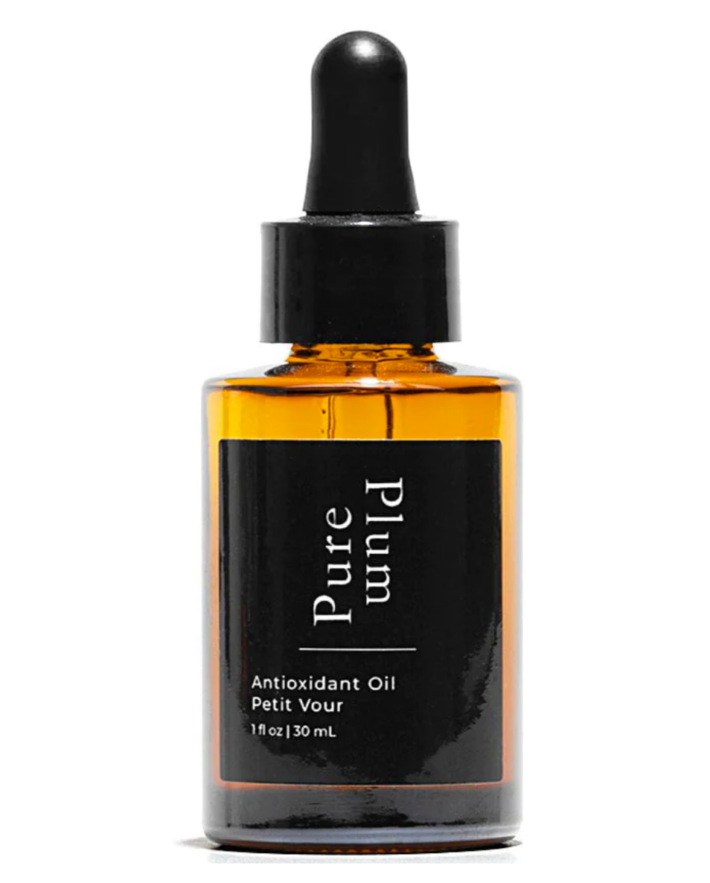
Petit Vour Pure Plum Antioxidant Oil | $36
Petit Vour’s debut of their own Pure Plum Antioxidant Oil shows just how much of a believer they are in this ingredient. They’ve only created 3 of their own products under the Petit Vour name––two of which are plum oil-centric. (Check out their head-to-toe body oil, Plum Body.)
Petit Vour’s single ingredient, certified organic Pure Plum Antioxidant Oil is a great option for those interested in trying plum seed oil without a higher price tag.
Pros
- Ideal for all skin types (even acneic and rosacea)
- Single ingredient
- Price
- USDA Certified Organic
- Vegan and cruelty free
- Non-comedogenic
Cons:
- Single ingredient
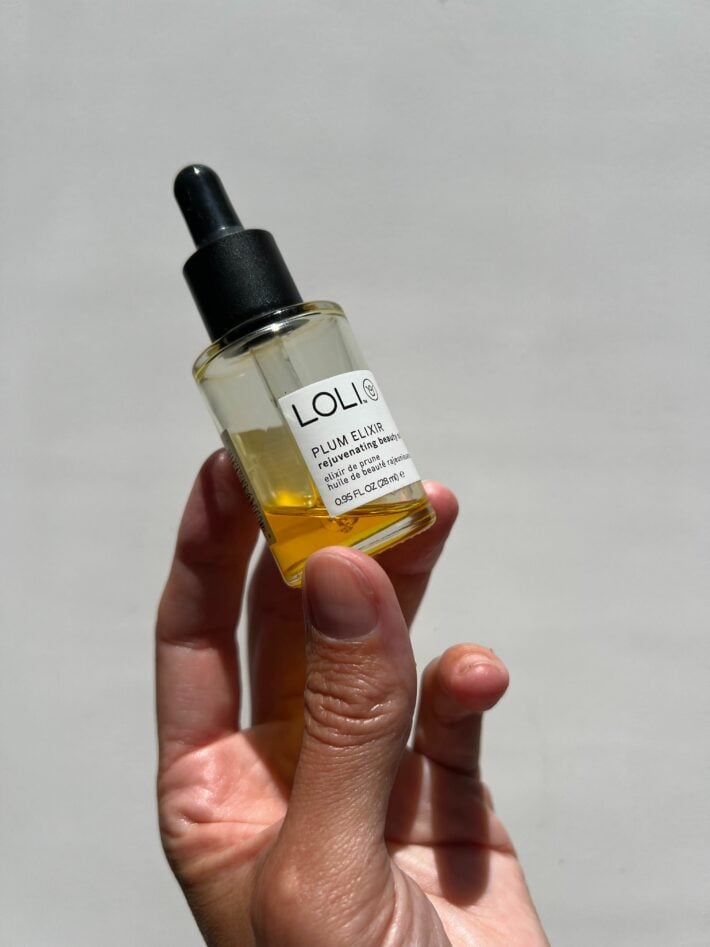
Loli Plum Elixir | $68
Loli sustainably sources their plum seed oil from the kernel of the French Ente plum in Gascony, France (hello!) and boosts it with sea buckthorn fruit oil, pomegranate seed oil and tea seed oil. It’s a waterless food grade blend created to deeply moisturize, calm, heal and balance skin.
What stood out to me about this oil is even though it’s a blended oil, it still retains that hardy viscosity I love so much about straight plum oil. Loved this oil so much, I used it to the last drop.
Pros
- Benefits of 4 ingredients
- Scent
- MADE SAFE® certified
- Organic
- Sustainable production methods
- Food-Grade, Non-GMO, Vegan, Gluten-Free, Cold-Pressed
- Clinically tested
Cons:
- Price
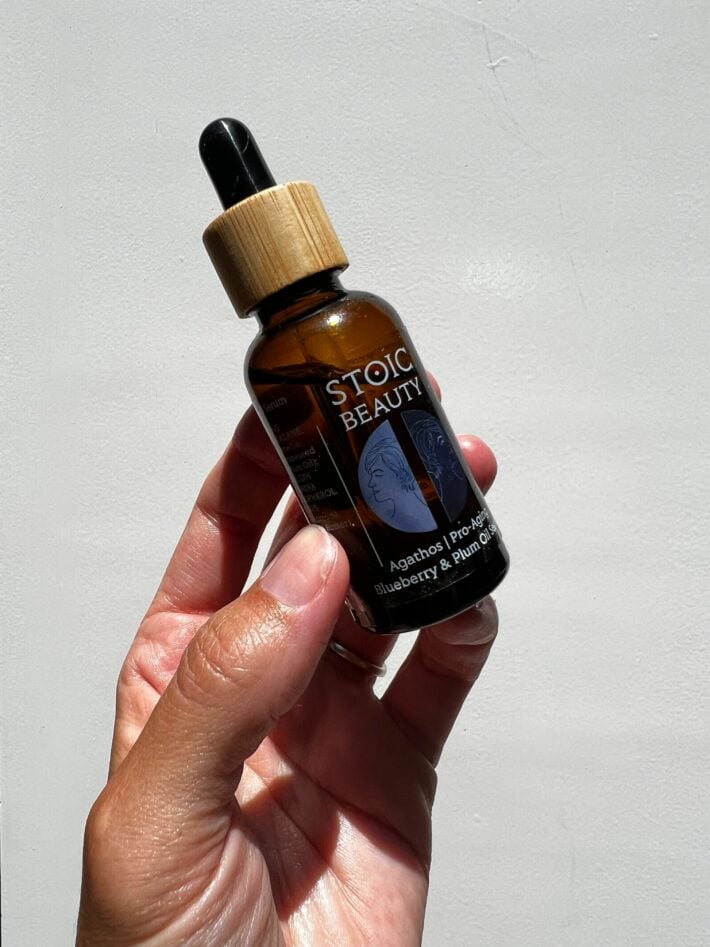
Stoic Beauty Agathos | $30
Stoic Beauty’s 3 ingredient blend utilizes plum oil, rosehip oil and blueberry oil (we rarely see this effective ingredient) to create a make-up primer and face oil that specifically supports mature skin. These natural sources of vitamins A, C, and E promote collagen production, help with skin cell turnover, and deliver antioxidants to slow down photo-aging and sun damage.
Also loved this oil so much we teamed up with Stoic this past spring to offer a sick deal on their duo.
Pros
- Benefits of 3 ingredients
- Price
- Scent
- EcoCert
- Leaping Bunny Certified
Cons:
- Not certified organic
Are you a plum seed oil lover too? Which ones have you tried?

TNK Team Note: This article contains affiliate links. TNK uses affiliate links as a source for revenue to fund operations of the business and to be less dependent on branded content. TNK stands behind all product recommendations. Still have questions about these links or our process? Feel free to email us.
FAQ
Plum oil is used as a facial oil as well as the following uses:
-Prepping skin before makeup? Apply a drop or two to skin before your foundation as a primer.
-Want to turn makeup into skincare? Add a drop or two to your foundation.
-Spending time in the sun? Plum oil adds a natural boost of SPF protection.
-Dry or damaged hair? Massage a few drops to the ends of your strands.
Learn about its benefits here.
There are several health benefits of plum oil. These benefits include: protect the skin from free radicals, evens skin tone, improves hyperpigmentation and is a natural sunscreen booster. Learn more about plum seed oil here.
Plum oil works for most skin types but is especially beneficial for dry, mature, acne-prone, sensitive and redness-prone skin—it can even be used to calm skin conditions like rosacea and eczema. Learn more about it here.
References
1. Choi JK, Kim SH. Rutin suppresses atopic dermatitis and allergic contact dermatitis. Experimental Biology and Medicine. 2013 Apr;238(4):410-7.
2. Dahl A, Oregajo C, Yatskayer M. American Academy of Dermatology, 69th Annual Meeting, February 4-8, 2011, New Orleans, LA. Poster #3209.
3. Jaiswal R, Karaköse H, Rühmann S, Goldner K, Neumüller M, Treutter D, Kuhnert N. Identification of phenolic compounds in plum fruits (Prunus salicina L. and Prunus domestica L.) by high-performance liquid chromatography/tandem mass spectrometry and characterization of varieties by quantitative phenolic fingerprints. Journal of Agricultural and Food Chemistry. 2013 Dec 11;61(49):12020-31.
4. Kamal R, Kharbach M, El Jemli M. Antioxidant activities, total polyphenolic compounds and Hplc/Dad/Ms phenolic profile of argan oil derived from two different methods of extractions. J Chem Pharmaceutical Res. 2016;8:173-9.
5. Kamel R, Mostafa DM. Rutin nanostructured lipid cosmeceutical preparation with sun protective potential. Journal of Photochemistry and Photobiology B: Biology. 2015 Dec 1;153:59-66.
6. Kaulmann A, Jonville MC, Schneider YJ, Hoffmann L, Bohn T. Carotenoids, polyphenols and micronutrient profiles of Brassica oleraceae and plum varieties and their contribution to measures of total antioxidant capacity. Food chemistry. 2014 Jul 15;155:240-50.
7. Khallouki F, Haubner R, Erben G, Ulrich CM, Owen RW. Phytochemical composition and antioxidant capacity of various botanical parts of the fruits of Prunus× domestica L. from the Lorraine region of Europe. Food Chemistry. 2012 Aug 1;133(3):697-706.
8. Mahmood A, Ahmed R, Kosar S. Phytochemical screening and biological activities of the oil components of Prunus domestica Linn. Journal of Saudi Chemical Society. 2009 Oct 1;13(3):273-7.
9. Nwabuebo AT. The effect of extraction methods on the oxidatives stability of marula and moringa seed oil (Doctoral dissertation).
10. Peres DA, De Oliveira CA, Da Costa MS, Tokunaga VK, Mota JP, Rosado C, Consiglieri VO, Kaneko TM, Velasco MV, Baby AR. Rutin increases critical wavelength of systems containing a single UV filter and with good skin compatibility. Skin Research and Technology. 2016 Aug;22(3):325-33.
11. Pieroni P, Quave CL, Villanelli ML, Mangino P, Sabbatini G, Santini L, Boccetti T, Profili M, Ciccioli T, Rampa LG, Antonini G, Girolamini C, Cecchi M, Tomasi M (2004). Ethnopharmacognostic survey on the natural ingredients used in folk cosmetics, cosmeceuticals and remedies for healing skin diseases in the inland Marches, Central-Eastern Italy. J. Ethnopharmacol. 91:331–344.
12. Plainfossé H, Burger P, Verger-Dubois G, Azoulay S, Fernandez X. Design Methodology for the Development of a New Cosmetic Active Based on Prunus domestica L. Leaves Extract. Cosmetics. 2019 Mar;6(1):8.
13. Plainfossé H. Recherche et développement d’ingrédients cosmétiques innovants favorisant la réparation cutanée à partir de matières premières naturelles d’origine méditerranéenne (Doctoral dissertation, COMUE Université Côte d’Azur (2015-2019)).
14. Savic I, Savic Gajic I, Gajic D. Physico-Chemical Properties and Oxidative Stability of Fixed Oil from Plum Seeds (Prunus domestica Linn.). Biomolecules. 2020 Feb;10(2):294.
15. Su JC, Lowe AJ. Prevention of atopic dermatitis: Etiological considerations and identification of potential strategies. Indian Journal of Paediatric Dermatology. 2019 Apr 1;20(2):93.
16. Suryawanshi J. In Vivo Determination of Sun Protection Factor and Evaluation of Herbal Oils. International Journal of Pharmacology Research. 2016;6(1):37-43.
17. Uluata S, Ozdemir N. Evaluation of chemical characterization, antioxidant activity and oxidative stability of some waste seed oil. Turkish Journal of Agriculture-Food Science and Technology. 2017 Jan 15;5(1):48-53.
18. Kar HK. Efficacy of beta-carotene topical application in melasma: an open clinical trial. Indian Journal of Dermatology, Venereology, and Leprology. 2002 Nov 1;68(6):320.
19. Merinville E, Byrne A, Visdal-Johnsen L. Clinical evaluation of a dioic acid-based formulation in a darkskinned population. Proceedings of the IFSCC, Buenos Aires, Argentina. 2010. https://pubmed.ncbi.nlm.nih.gov/22994950/
20. Wiechers JW, Groenhof FJ, Wortel VAL, Miller RM, Hindle NA, Drewitt-Barlow A. Octadecenedioic acid for a more even skin tone. Cosmetics and toiletries. 2002;117(7):55-68. https://pascal-francis.inist.fr/vibad/index.php?action=getRecordDetail&idt=13778700
21. Zhu W, Gao J. The use of botanical extracts as topical skin-lightening agents for the improvement of skin pigmentation disorders. InJournal of Investigative Dermatology Symposium Proceedings 2008 Apr 1 (Vol. 13, No. 1, pp. 20-24). Elsevier.


